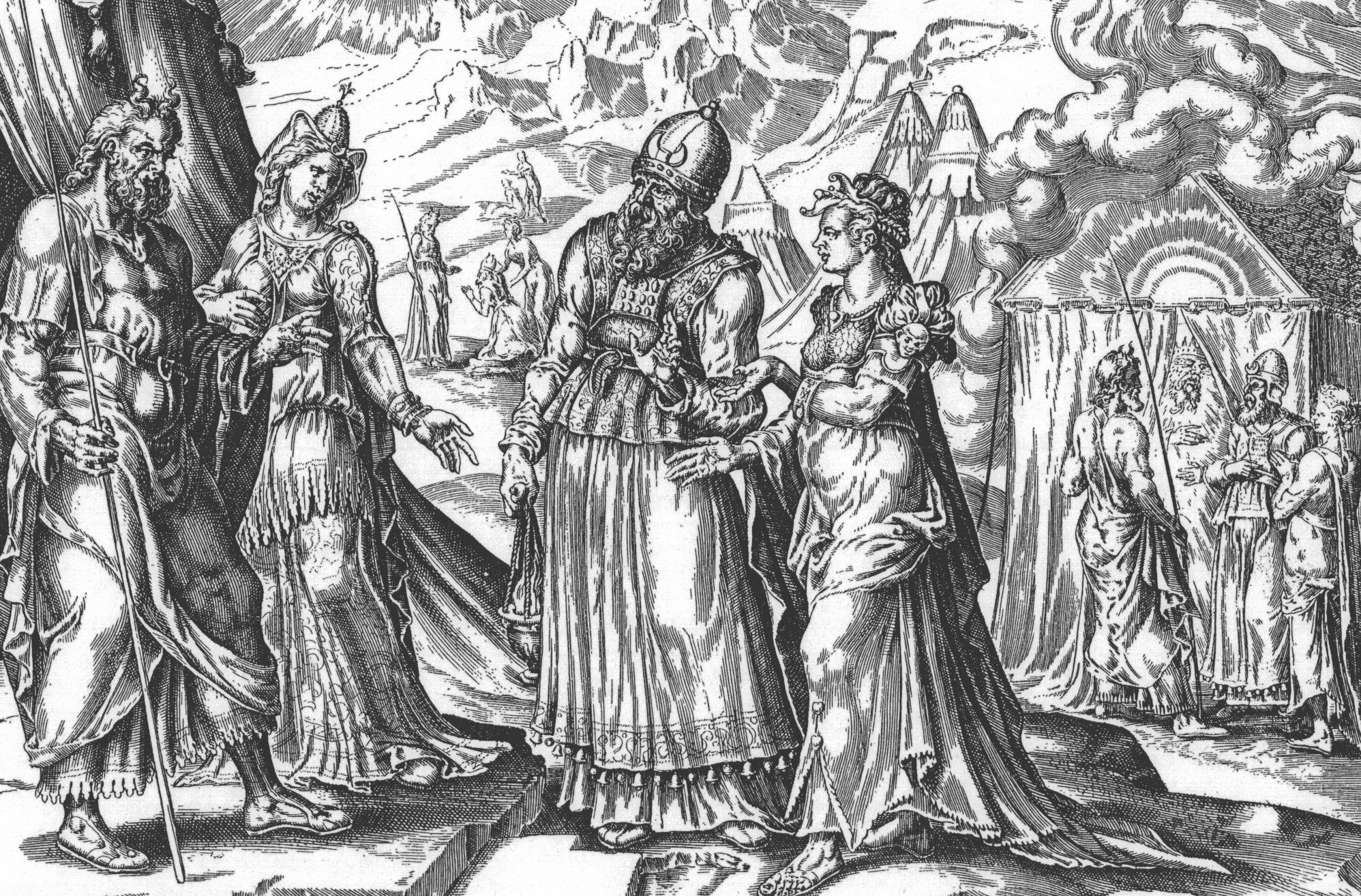Tharbis on:
[Wikipedia]
[Google]
[Amazon]
Tharbis (alternatively Adoniah''Book of Jasher'', 23.5-25.5), according to Josephus, was a Cushite princess of the Kingdom of Kush, who married
 Some have suggested that this story is an invention, arising from the "enigmatic" verse in
Some have suggested that this story is an invention, arising from the "enigmatic" verse in
Moses
In Abrahamic religions, Moses was the Hebrews, Hebrew prophet who led the Israelites out of slavery in the The Exodus, Exodus from ancient Egypt, Egypt. He is considered the most important Prophets in Judaism, prophet in Judaism and Samaritani ...
prior to his marriage to Zipporah
Zipporah is mentioned in the Book of Exodus as the wife of Moses, and the daughter of Jethro (biblical figure), Jethro, the priest and prince of Midian.
She is the mother of Moses' two sons: Eliezer and Gershom.
In the Book of Chronicles, two of ...
as told in the Book of Exodus
The Book of Exodus (from ; ''Šəmōṯ'', 'Names'; ) is the second book of the Bible. It is the first part of the narrative of the Exodus, the origin myth of the Israelites, in which they leave slavery in Biblical Egypt through the strength of ...
.
Purported family
According to the first-century Romano-Jewish scholar Josephus, Tharbis was the daughter of an unnamed king of " Saba", which he claimed was in Ethiopia, who lived before the Exodus. In the medieval rabbinic version found in the Sefer HaYashar, she is instead the king's wife, not his daughter, and the king is named Kikianus.Marriage
Per Josephus' account, in Moses' early adult life, he led the Egyptians in a campaign against invading Ethiopians and defeated them. While Moses besieged the city of Meroë, Tharbis watched him lead the Egyptian army from within the city walls, and fell in love with him. He agreed to marry her if she would procure the deliverance of the city into his power. She did so immediately and Moses promptly married her. The account of this expedition is also mentioned byIrenaeus
Irenaeus ( or ; ; ) was a Greeks, Greek bishop noted for his role in guiding and expanding Christianity, Christian communities in the southern regions of present-day France and, more widely, for the development of Christian theology by oppos ...
.
After the war, when Moses sought to return to Egypt
Egypt ( , ), officially the Arab Republic of Egypt, is a country spanning the Northeast Africa, northeast corner of Africa and Western Asia, southwest corner of Asia via the Sinai Peninsula. It is bordered by the Mediterranean Sea to northe ...
– Tharbis is said to have resisted and insisted that he remain in Ethiopia
Ethiopia, officially the Federal Democratic Republic of Ethiopia, is a landlocked country located in the Horn of Africa region of East Africa. It shares borders with Eritrea to the north, Djibouti to the northeast, Somalia to the east, Ken ...
as her husband. He then, being "most skilful in astronomy
Astronomy is a natural science that studies celestial objects and the phenomena that occur in the cosmos. It uses mathematics, physics, and chemistry in order to explain their origin and their overall evolution. Objects of interest includ ...
", cast two rings; one which caused the wearer to become forgetful, and the other to cause the wearer to remember all. He gave the first ring to Tharbis, and wore the second himself, and waited for her oblivious nature to lose interest in retaining him as a husband – and when she had forgotten her love for him, he returned to Egypt alone. Some have suggested this period may have started when Moses was 27, and that he remained with Tharbis for forty years; although this number contradicts the traditional sources which suggest that Moses killed an Egyptian overseer when he was approximately 40 years old himself.
Theories
 Some have suggested that this story is an invention, arising from the "enigmatic" verse in
Some have suggested that this story is an invention, arising from the "enigmatic" verse in Numbers
A number is a mathematical object used to count, measure, and label. The most basic examples are the natural numbers 1, 2, 3, 4, and so forth. Numbers can be represented in language with number words. More universally, individual numbers can ...
12:1 that states "Miriam
Miriam (, lit. ‘rebellion’) is described in the Hebrew Bible as the daughter of Amram and Jochebed, and the older sister of Moses and Aaron. She was a prophetess and first appears in the Book of Exodus.
The Torah refers to her as "Miria ...
and Aaron
According to the Old Testament of the Bible, Aaron ( or ) was an Israelite prophet, a high priest, and the elder brother of Moses. Information about Aaron comes exclusively from religious texts, such as the Hebrew Bible, the New Testament ...
spoke against Moses because of the Cushite woman whom he had married". Miriam is punished for her rebuke of her brother by being afflicted with leprosy
Leprosy, also known as Hansen's disease (HD), is a Chronic condition, long-term infection by the bacteria ''Mycobacterium leprae'' or ''Mycobacterium lepromatosis''. Infection can lead to damage of the Peripheral nervous system, nerves, respir ...
. Moses is depicted with an African wife in a 17th-century painting by Jacob Jordaens.
It is also suggested that Artapanus of Alexandria may have concocted the story "to impress his pagan audience" with "such a love story".
In fiction
Tharbis is a character in "Tarbis of the Lake", a 1934 supernatural story by E. Hoffmann Price. In 1937, Amy Redpath Roddick published an 80-page "poetic drama" telling an account of the life of Tharbis. Tharbis is portrayed by Esther Brown in Cecil B. DeMille's 1956 biblical epic '' The Ten Commandments''. In the film, she appears briefly and is not Moses's wife.See also
* on Hebrew WikipediaReferences
{{Authority control Kingdom of Kush African princesses Ancient princesses Family of Aaron and Moses